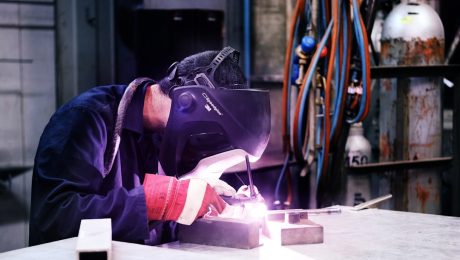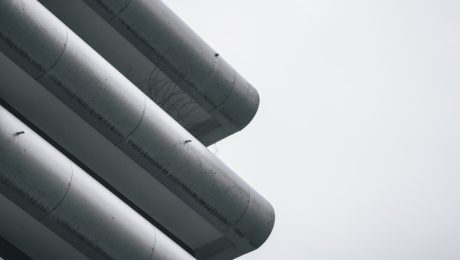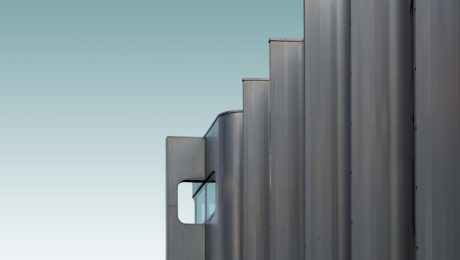For decades, galvanized steel pipes have been a staple in construction and plumbing systems worldwide. Their enduring popularity stems from a unique combination of strength, durability, and cost-effectiveness. While newer materials exist, galvanized pipes continue to offer significant advantages that make them a compelling choice for many applications. This comprehensive guide explores the key benefits of choosing galvanized pipes for your next project.
Unmatched Corrosion Resistance: The Core Advantage
The defining characteristic of galvanized pipe is its zinc coating. This process, known as galvanization, involves dipping the steel pipe in a molten zinc bath, creating a protective layer that prevents rust and corrosion. This is crucial, especially in environments with high humidity, fluctuating temperatures, or exposure to harsh chemicals. Unlike other materials prone to degradation over time, galvanized pipes maintain their structural integrity for extended periods, minimizing the need for frequent replacements and reducing long-term costs. The zinc coating acts as a sacrificial anode, meaning it corrodes preferentially to the underlying steel, further protecting the pipe’s structural integrity. This superior corrosion resistance translates to a longer lifespan compared to uncoated steel pipes or even some modern alternatives.
Exceptional Durability and Strength: Built to Last
Galvanized pipes are not only resistant to corrosion but also incredibly durable and strong. The steel core provides exceptional structural integrity, capable of withstanding significant pressure and impact. This makes them ideal for applications requiring robust plumbing systems, such as high-pressure water lines, gas lines, and even fire sprinkler systems. Their strength ensures minimal risk of leaks or breaks, contributing to a safer and more reliable system. This durability, combined with their corrosion resistance, means galvanized pipes can withstand the test of time, often outlasting other materials significantly.
Cost-Effectiveness: A Smart Investment in the Long Run
While the initial cost of galvanized pipes might seem slightly higher than some plastic alternatives, their longevity makes them a remarkably cost-effective solution in the long run. The reduced need for repairs and replacements translates to significant savings over the pipe’s lifespan. Consider the labor costs associated with frequent repairs or complete system overhauls – galvanized pipes minimize these expenses, making them a financially sound choice for both residential and commercial projects. This long-term cost-effectiveness is a crucial factor that continues to drive their popularity.
Ease of Installation and Maintenance: Streamlined Processes
Galvanized pipes are relatively easy to install and maintain compared to some other piping systems. Their robust construction allows for straightforward connections using standard fittings and threading techniques. This simplifies the installation process, reducing labor costs and project timelines. Furthermore, the durable nature of galvanized pipes means they require minimal maintenance, saving time and resources in the long run. The straightforward installation and minimal maintenance requirements contribute to their overall practicality and appeal.
Wide Range of Applications: Versatility in Action
The versatility of galvanized pipes is another key factor in their enduring success. They are suitable for a vast array of applications, including residential and commercial plumbing systems, irrigation systems, industrial piping, and even fire protection systems. Their strength, durability, and corrosion resistance make them adaptable to various environments and pressure requirements. This wide range of applications underscores their adaptability and continued relevance in the modern construction and industrial landscape. From carrying potable water to handling aggressive chemicals, galvanized pipes offer a reliable solution for diverse needs.
In conclusion, the advantages of galvanized pipes are undeniable. Their unmatched corrosion resistance, exceptional durability, cost-effectiveness, ease of installation, and wide range of applications make them a superior choice for numerous projects. While new materials are constantly emerging, the enduring qualities of galvanized steel pipes ensure their continued relevance and value in the construction and plumbing industries.
SEO-Friendly Tags:
- galvanized pipe benefits
- galvanized steel pipe applications
- corrosion resistant piping
- durable plumbing systems
- cost effective plumbing solutions
Steel frames, with their inherent strength and versatility, are ubiquitous in modern construction. From towering skyscrapers to modest residential buildings, their efficient design is crucial for ensuring structural integrity, safety, and economic viability. This comprehensive guide delves into the key aspects of designing steel frames, providing a detailed overview for both seasoned professionals and aspiring engineers.
1. Understanding Structural Analysis: The Foundation of Steel Frame Design
Before even considering material selection or connection types, a thorough structural analysis is paramount. This involves determining the loads the frame will bear, including dead loads (the weight of the structure itself), live loads (occupancy loads, furniture, snow), and environmental loads (wind, seismic). Finite Element Analysis (FEA) software is commonly used to model the structure and accurately predict stress and deflection under various loading scenarios. This analysis helps determine the required member sizes and sections to ensure the frame can withstand these loads without exceeding allowable stress limits. Different analysis methods, such as linear elastic analysis, non-linear analysis, and dynamic analysis, might be employed depending on the complexity and criticality of the structure. Understanding the limitations of each method and selecting the appropriate one is crucial for accurate and reliable results.
2. Material Selection: Choosing the Right Steel for the Job
Steel grades play a vital role in the overall performance and cost-effectiveness of a steel frame. The selection process involves considering factors such as yield strength, tensile strength, ductility, and weldability. Common steel grades used in structural applications include ASTM A992 (high-strength low-alloy steel) and ASTM A572 (structural steel). Higher-strength steels allow for smaller section sizes, reducing material costs and weight, but they might require more sophisticated fabrication techniques. Furthermore, factors like corrosion resistance and fire protection need to be factored in during material selection. The structural engineer must carefully balance strength, cost, and constructability when choosing the appropriate steel grade for the project.
3. Connection Design: The Crucial Link in Steel Frame Systems
Connections are the critical points where individual members of a steel frame are joined together. The design of these connections is crucial for the overall structural integrity of the frame. Common connection types include bolted connections, welded connections, and a combination of both. The selection of the connection type depends on several factors, including the type of load being transferred, the strength requirements, fabrication constraints, and cost considerations. Detailed analysis of connection behavior is essential to ensure adequate strength and prevent premature failure under service loads. Proper detailing of welds and bolt patterns is crucial to avoid stress concentrations and ensure a smooth transfer of forces. Connection design often involves extensive calculations and checks according to relevant building codes.
4. Detailing and Drafting: Bringing the Design to Life
Detailed drawings are essential for the fabrication and erection of the steel frame. These drawings must accurately depict the dimensions, sections, connection details, and material specifications of all members. Software like AutoCAD or Revit is typically used to create these drawings, ensuring accuracy and consistency. The detailing process requires a thorough understanding of fabrication limitations and best practices. Clear and concise drawings are crucial for smooth communication between the design team, fabricators, and erectors, minimizing errors and potential delays during construction. Proper detailing also helps in optimizing the construction process and minimizing waste.
5. Code Compliance and Regulatory Approvals: Ensuring Safety and Legality
Steel frame design must comply with relevant building codes and regulations, ensuring the safety and structural integrity of the completed structure. Codes like the American Institute of Steel Construction (AISC) Specification and the International Building Code (IBC) provide guidelines for design loads, material properties, connection design, and fabrication practices. Engineers must ensure that their designs meet or exceed the requirements of these codes. Obtaining necessary permits and approvals from relevant authorities is also crucial before commencing construction. Compliance with codes not only ensures safety but also avoids potential legal issues and delays during the project lifecycle. Regular inspections and quality control measures are essential to maintain compliance throughout the construction process.
Designing steel frames is a complex process requiring a multidisciplinary approach combining structural analysis, material science, and construction expertise. By following these steps and adhering to relevant codes, engineers can create robust, efficient, and safe steel structures that meet the demands of modern construction.
SEO Tags:
- Steel Frame Design
- Structural Steel Design
- Steel Frame Analysis
- Steel Connection Design
- AISC Steel Design
Winter’s harsh conditions can wreak havoc on building materials. Ice, snow, and freezing temperatures pose significant challenges, demanding durability and resilience from any exposed structure. Galvanized steel, with its protective zinc coating, is often a preferred choice in cold climates. But how well does it truly perform? This comprehensive guide delves into the performance characteristics of galvanized products in freezing temperatures, exploring both their strengths and limitations.
Unwavering Corrosion Resistance in Freezing Temperatures
One of the primary benefits of galvanization is its exceptional corrosion resistance. The zinc coating acts as a sacrificial anode, protecting the underlying steel from rust and deterioration. This protection is crucial in cold climates where de-icing salts, prevalent on roads and pavements, can accelerate corrosion. While the zinc layer itself might experience some minor surface changes in extreme cold, the underlying steel remains largely untouched, ensuring long-term structural integrity. The zinc’s ability to withstand freezing and thawing cycles without significant degradation makes it an ideal choice for outdoor applications exposed to harsh winter elements. However, it’s important to note that the thickness of the zinc coating influences its longevity. Heavier coatings provide more substantial protection against prolonged exposure to corrosive environments.
The Impact of Snow and Ice Accumulation on Galvanized Structures
The weight of accumulated snow and ice can significantly stress structures. Galvanized steel, due to its inherent strength, generally handles this load effectively. However, the design and construction of the structure are equally crucial. Proper drainage systems are essential to prevent water from accumulating and freezing, creating additional stress points. While the galvanized coating doesn’t directly prevent ice formation, its durability ensures that the underlying steel remains strong enough to support the added weight. Regular snow removal is still recommended to minimize potential strain and prevent damage, regardless of the material used.
Addressing Thermal Bridging in Cold Climate Construction
Thermal bridging refers to the transfer of heat through conductive materials. In cold climates, this can lead to heat loss and increased energy costs. Galvanized steel, being a relatively conductive material, can contribute to thermal bridging if not properly insulated. Therefore, careful consideration should be given to insulation techniques when using galvanized products in cold climate construction. Proper insulation minimizes heat transfer, ensuring optimal energy efficiency and preventing potential condensation issues that can accelerate corrosion in less protected areas.
Maintaining Galvanized Products in Sub-Zero Temperatures
While galvanized steel is highly durable, proper maintenance can extend its lifespan even further, especially in extreme cold. Regular inspections for any signs of damage or corrosion are crucial. While the zinc coating provides excellent protection, minor scratches or abrasions can expose the underlying steel, making it vulnerable to rust. Addressing such issues promptly is vital. In extremely cold climates, using appropriate cleaning methods that won’t damage the zinc coating is also important. Avoid harsh chemicals that can degrade the protective layer. Simple cleaning with water and a soft brush is often sufficient.
Choosing the Right Galvanized Product for Your Cold Climate Project
The selection of the appropriate galvanized product depends on the specific application. Factors to consider include the thickness of the zinc coating, the steel grade, and the intended use. For high-stress applications or those exposed to particularly aggressive environments, heavier coatings and higher-grade steel are recommended. Consulting with a materials specialist can help in selecting the optimal galvanized product to meet the specific demands of your project in a cold climate. Remember to consider factors like anticipated snow load, wind exposure, and the presence of de-icing salts when making your selection.
In conclusion, galvanized steel offers excellent performance in cold climates due to its inherent strength and exceptional corrosion resistance. However, understanding its limitations regarding thermal bridging and the importance of proper maintenance and material selection is crucial for maximizing its lifespan and ensuring optimal performance in freezing temperatures. By carefully considering these factors, you can confidently utilize galvanized products in your cold climate projects.
SEO Tags: Galvanized steel, cold climate, corrosion resistance, winter construction, thermal bridging, snow load, de-icing salts
body { font-family: sans-serif; line-height: 1.6; }
h1, h2, h3 { color: #333; }
h1 { font-size: 2.5em; }
h2 { font-size: 2em; }
h3 { font-size: 1.5em; }
The steel industry is a complex landscape, filled with a bewildering array of grades, specifications, and suppliers. Making the right steel buying decisions is crucial for profitability and project success, but navigating this complexity without expert guidance can be challenging and costly. This is where technical consulting for steel buyers becomes invaluable.
Understanding Your Steel Requirements: The Foundation of Smart Buying
Before you even begin searching for steel suppliers, a thorough understanding of your specific needs is paramount. Our technical consultants work closely with you to define your project requirements, considering factors such as:
- Application: What will the steel be used for? This dictates the necessary mechanical properties, corrosion resistance, and other critical characteristics.
- Environmental Conditions: Will the steel be exposed to harsh weather, chemicals, or extreme temperatures? This influences the choice of grade and necessary coatings.
- Budget Constraints: Understanding your budget allows us to explore cost-effective alternatives without compromising quality or performance.
- Lead Time Requirements: Project deadlines are critical. We help you select readily available steel grades or work with suppliers to meet tight schedules.
By meticulously analyzing these factors, we build a solid foundation for informed steel selection and procurement.
Optimizing Steel Specifications: Balancing Performance and Cost
Once your requirements are clear, we help you optimize your steel specifications. This involves selecting the most suitable steel grade and ensuring it meets all performance criteria while minimizing unnecessary costs. Over-specifying steel can significantly inflate your budget without providing any tangible benefits. Our expertise allows us to identify the optimal balance between performance and cost, often uncovering opportunities for significant savings.
We leverage our deep understanding of various steel standards (ASTM, EN, JIS, etc.) and industry best practices to ensure your chosen steel meets the highest quality standards and regulatory compliance requirements.
Navigating the Steel Supply Chain: Ensuring Timely Delivery and Quality Control
The steel supply chain can be intricate, with numerous intermediaries involved. Our consultants help you navigate this complexity, ensuring timely delivery and maintaining stringent quality control throughout the process. We assist with:
- Supplier Selection: Identifying reliable suppliers with a proven track record of quality and on-time delivery.
- Negotiating Contracts: Securing favorable pricing and payment terms.
- Logistics Management: Optimizing transportation and warehousing to minimize costs and delays.
- Quality Assurance: Implementing robust quality control measures to ensure the steel you receive meets the specified standards.
Our network of trusted suppliers and logistics partners ensures a smooth and efficient steel procurement process.
Implementing Cost-Effective Steel Procurement Strategies
Cost optimization is a central focus of our technical consulting services. We help you implement strategies to reduce your steel procurement costs without compromising quality. This includes:
- Strategic Sourcing: Identifying and leveraging multiple suppliers to ensure competitive pricing and supply chain resilience.
- Volume Discounts: Negotiating favorable pricing based on your purchasing volume.
- Inventory Management: Optimizing your inventory levels to minimize storage costs and prevent obsolescence.
- Waste Reduction: Implementing strategies to minimize steel waste during fabrication and construction.
Our data-driven approach helps you identify areas for cost savings and implement sustainable procurement practices.
Leveraging Technology for Enhanced Steel Procurement
Technology is transforming the steel industry, offering new opportunities for efficiency and cost optimization. We leverage advanced technologies such as:
- Data Analytics: Analyzing historical purchasing data to identify trends and optimize procurement strategies.
- Supply Chain Management Software: Improving visibility and control over the steel supply chain.
- Digital Twin Technology: Creating virtual models of steel structures to optimize design and reduce material waste.
By embracing these technologies, we help you enhance your steel procurement process and gain a competitive edge.
Our technical consulting services empower steel buyers to make informed decisions, optimize their procurement processes, and achieve significant cost savings. Contact us today to learn how we can help you navigate the complexities of the steel industry and unlock the full potential of your projects.
Annealed wire, a seemingly simple material, plays a crucial role in a vast array of industries. This heat-treated metal undergoes a process that significantly alters its properties, making it incredibly versatile and suitable for a wide range of applications. Understanding these applications and the reasons behind annealed wire’s popularity is key to appreciating its importance in modern manufacturing and technology.
1. Electrical Conductivity: Powering Our World with Annealed Wire
One of the most prominent applications of annealed wire is in electrical systems. The annealing process reduces internal stresses within the metal, resulting in improved electrical conductivity. This enhanced conductivity minimizes energy loss during transmission, making it ideal for power lines, electrical wiring in buildings, and various electronic components. The softness and ductility of annealed wire also make it easy to handle and work with during installation, reducing the risk of breakage and simplifying complex wiring configurations. Different types of annealed wire, such as copper and aluminum, are chosen based on the specific electrical requirements of the application. Copper, for instance, boasts superior conductivity, making it the preferred choice for high-precision applications, while aluminum offers a lighter and more cost-effective alternative for large-scale power transmission.
2. Spring Manufacturing: The Heart of Resilient Mechanisms
The enhanced ductility and malleability achieved through annealing make the wire exceptionally suitable for spring manufacturing. Annealed wire can be easily formed into intricate shapes and coils without fracturing, allowing for the creation of springs with varying degrees of stiffness and resilience. These springs are essential components in numerous devices, from automotive suspensions and clocks to medical devices and industrial machinery. The ability to precisely control the wire’s properties during annealing ensures that the resulting springs meet the specific performance requirements of the application. The consistent quality of annealed wire contributes to the reliability and longevity of these spring-based mechanisms.
3. Jewelry Making: Adding Sparkle and Strength to Precious Designs
Annealed wire finds its place in the delicate world of jewelry making, where its malleability is highly valued. The process allows artisans to easily shape and bend the wire into intricate designs without causing breakage. Various metals, such as silver, gold, and copper, are frequently annealed to create stunning jewelry pieces. The softness of the annealed wire makes it easier to work with intricate beading techniques and delicate soldering processes. Additionally, the ability to anneal the wire multiple times during the creation process allows for greater flexibility and control over the final design, ensuring a high-quality and durable piece of jewelry.
4. Industrial Manufacturing: A Foundation for Diverse Processes
Beyond specialized applications, annealed wire serves as a fundamental component in various industrial manufacturing processes. Its malleability allows it to be easily drawn into different shapes and sizes, making it suitable for creating components in a wide range of industries. From the construction of wire mesh used in fencing and reinforcement to the production of nails and staples, annealed wire’s versatility shines through. Furthermore, its ability to be welded and soldered makes it ideal for joining different metal parts, contributing to the strength and integrity of the final product. The consistent quality and predictable properties of annealed wire ensure consistent results in high-volume manufacturing environments.
5. Beyond the Basics: Specialized Applications of Annealed Wire
The applications of annealed wire extend beyond the commonly known examples. In the medical field, annealed wire is used in the creation of surgical instruments, stents, and other medical implants. Its biocompatibility, combined with its malleability, makes it a suitable material for these critical applications. In the aerospace industry, annealed wire plays a role in the construction of lightweight yet strong components, contributing to fuel efficiency and overall performance. Even in the seemingly unrelated field of artistic wire sculpture, the malleability and ductility of annealed wire allow artists to create intricate and visually stunning works.
In conclusion, annealed wire, despite its seemingly simple nature, is a remarkably versatile material with a broad range of applications across diverse industries. Its unique properties, resulting from the annealing process, make it indispensable in everything from powering our homes to creating intricate jewelry and sophisticated medical devices. The continued development and refinement of annealing techniques will undoubtedly lead to even more innovative and impactful uses of this remarkable material in the future.
Tags: annealed wire, wire applications, heat treated wire, electrical wire, spring wire
body { font-family: sans-serif; line-height: 1.6; }
h1, h2, h3 { color: #333; }
h1 { font-size: 2.5em; }
h2 { font-size: 2em; }
h3 { font-size: 1.5em; }
In today’s complex and increasingly regulated manufacturing landscape, product traceability is no longer a luxury—it’s a necessity. It’s the ability to track a product’s journey from raw material sourcing to final delivery, providing a complete and auditable history. This post will delve into the crucial aspects of product traceability, exploring its benefits, challenges, and effective implementation strategies.
The Pillars of Effective Product Traceability
Building a robust traceability system requires a multi-faceted approach. It’s not just about technology; it’s about integrating processes, people, and data. Key pillars include:
- Unique Identification: Every item, from raw materials to finished goods, needs a unique identifier (UID). This could be a barcode, RFID tag, or serial number, allowing for seamless tracking throughout the supply chain.
- Data Capture and Management: A comprehensive system for capturing data at each stage of production is crucial. This involves integrating various data sources, including manufacturing execution systems (MES), enterprise resource planning (ERP) systems, and potentially even IoT sensors.
- Data Security and Integrity: Ensuring the accuracy and security of traceability data is paramount. Robust data management systems with access controls and data validation processes are essential to maintain data integrity and prevent unauthorized modifications.
- Real-time Visibility: Ideally, a traceability system should provide real-time visibility into the location and status of products throughout the supply chain. This allows for faster response times to issues and improved decision-making.
- Integration with other Systems: Seamless integration with existing ERP, CRM, and other enterprise systems is crucial for efficient data flow and holistic visibility across the organization.
Benefits of Implementing Product Traceability
The advantages of implementing a robust product traceability system extend far beyond simple tracking. Key benefits include:
- Improved Product Quality and Safety: Traceability enables rapid identification and isolation of faulty products or batches, minimizing the impact of recalls and enhancing consumer trust.
- Enhanced Supply Chain Efficiency: Real-time visibility into inventory levels and product location streamlines logistics, reduces waste, and optimizes delivery times.
- Reduced Costs Associated with Recalls: Quick identification of the source of a problem during a recall significantly reduces the financial burden and reputational damage.
- Better Compliance with Regulations: Many industries face stringent regulations requiring product traceability. A well-implemented system ensures compliance, avoiding hefty fines and legal issues.
- Increased Brand Reputation and Customer Trust: Demonstrating a commitment to transparency and product safety builds consumer confidence and strengthens brand loyalty.
- Data-Driven Decision Making: Traceability data can be analyzed to identify bottlenecks, optimize processes, and improve overall manufacturing efficiency.
Challenges in Implementing Product Traceability
Despite the significant benefits, implementing a successful product traceability system presents several challenges:
- Cost of Implementation: The initial investment in hardware, software, and integration can be substantial, particularly for large-scale operations.
- Data Integration Complexity: Integrating data from various sources and systems can be technically challenging and require specialized expertise.
- Data Security and Privacy Concerns: Protecting sensitive product and customer data requires robust security measures and compliance with relevant regulations.
- Lack of Standardization: The absence of universal standards for data formats and communication protocols can hinder interoperability between different systems.
- Resistance to Change: Implementing new systems often requires changes in workflows and employee training, which can face resistance from personnel accustomed to existing processes.
Technologies Enabling Product Traceability
Several technologies play a crucial role in enabling effective product traceability:
- Barcode and QR Codes: These are widely used for identifying and tracking products, offering a cost-effective solution for simpler traceability needs.
- Radio-Frequency Identification (RFID): RFID tags offer superior data capacity and read range compared to barcodes, enabling automated tracking and real-time inventory management.
- Blockchain Technology: Blockchain provides a secure and transparent ledger for recording product information, enhancing data integrity and preventing tampering.
- Internet of Things (IoT) Sensors: IoT sensors can monitor product conditions (temperature, humidity, etc.) throughout the supply chain, providing valuable insights into product quality and integrity.
- Cloud-Based Software Solutions: Cloud-based platforms offer scalability, accessibility, and data storage capabilities, making them ideal for managing large volumes of traceability data.
Strategies for Successful Implementation
To ensure successful implementation of a product traceability system, consider the following strategies:
- Start Small and Scale Gradually: Begin with a pilot project focusing on a specific product line or process before expanding to the entire operation.
- Choose the Right Technology: Select technologies that align with your specific needs, budget, and operational requirements.
- Invest in Employee Training: Provide thorough training to employees on the new system and processes to ensure smooth adoption and effective utilization.
- Establish Clear Goals and Metrics: Define specific, measurable, achievable, relevant, and time-bound (SMART) goals for the traceability system and track progress regularly.
- Foster Collaboration Across Departments: Ensure that all relevant departments (production, logistics, quality control, etc.) are involved in the implementation process to ensure seamless integration.
- Regularly Review and Improve: Continuously monitor the performance of the traceability system and make adjustments as needed to optimize its effectiveness.
Implementing product traceability is a significant undertaking, but the long-term benefits far outweigh the initial challenges. By carefully planning, selecting the appropriate technologies, and engaging all stakeholders, manufacturers can build a robust system that enhances efficiency, improves product quality, and strengthens customer trust.
Tags: Product Traceability, Manufacturing Traceability, Supply Chain Traceability, RFID in Manufacturing, Blockchain in Manufacturing
The world of industrial piping is constantly evolving, demanding materials that offer superior strength, durability, and corrosion resistance. Enter carbon fiber-coated steel pipes – a revolutionary advancement that combines the inherent robustness of steel with the exceptional properties of carbon fiber. This comprehensive guide delves into the intricacies of this innovative technology, exploring its benefits, applications, and future potential.
Unveiling the Strength: Mechanical Properties of Carbon Fiber-Coated Steel
Steel pipes are a mainstay in various industries due to their inherent strength and affordability. However, their susceptibility to corrosion and relatively high weight can pose limitations. Carbon fiber coating addresses these shortcomings dramatically. The process typically involves wrapping high-strength carbon fiber around the steel pipe, often incorporating a resin matrix for bonding and structural integrity. This composite structure leverages the best of both materials: the high tensile strength and stiffness of carbon fiber significantly enhance the pipe’s overall load-bearing capacity and resistance to bending and buckling. The steel core provides compressive strength and acts as a robust foundation for the carbon fiber layer. The result is a lighter, yet significantly stronger pipe, capable of withstanding higher pressures and demanding operational conditions.
Corrosion Resistance: Protecting Against the Elements
Corrosion is a major concern for steel pipes, especially in harsh environments like offshore platforms, chemical processing plants, and underground pipelines. The carbon fiber coating acts as a protective barrier, significantly reducing the steel’s exposure to corrosive agents such as water, oxygen, and chemicals. The coating’s impermeability prevents the ingress of moisture and electrolytes, significantly inhibiting the electrochemical reactions that lead to rust and degradation. This enhanced corrosion resistance extends the lifespan of the pipes, reduces maintenance costs, and minimizes environmental risks associated with pipe failure and leakage. Furthermore, specialized coatings can be tailored to resist specific corrosive agents, making carbon fiber-coated steel pipes suitable for a wide range of applications.
Enhanced Durability and Longevity: Extending the Lifespan of Critical Infrastructure
The combined strength and corrosion resistance of carbon fiber-coated steel pipes translate to exceptional durability and longevity. These pipes can withstand significantly higher internal pressures and external loads compared to their uncoated counterparts. This increased resilience makes them ideal for applications where structural integrity is paramount, such as high-pressure pipelines, subsea oil and gas transportation, and demanding industrial settings. The extended lifespan reduces the frequency of replacements, leading to significant cost savings over the long term and minimizing disruptions to operations. The reduced maintenance requirements also contribute to overall economic efficiency.
Applications Across Industries: Where Carbon Fiber-Coated Steel Pipes Shine
The remarkable properties of carbon fiber-coated steel pipes make them suitable for a diverse range of applications across various industries. These include:
- Oil and Gas Industry: Transporting crude oil, natural gas, and other hydrocarbons under high pressure and in challenging environments.
- Chemical Processing: Handling corrosive chemicals and fluids in demanding industrial settings.
- Water Management: Transporting potable water, wastewater, and other fluids requiring high integrity.
- Construction and Infrastructure: Supporting structural elements in bridges, buildings, and other large-scale projects.
- Aerospace: Used in specialized applications where lightweight, high-strength materials are essential.
The versatility of carbon fiber-coated steel pipes allows for their adaptation to specific needs, making them a valuable asset in diverse sectors.
Future Trends and Innovations: The Evolution of Carbon Fiber-Coated Steel
The field of carbon fiber-coated steel pipes is constantly evolving. Researchers are exploring new manufacturing techniques to improve the bonding between the carbon fiber and steel, enhance the coating’s durability, and reduce production costs. The development of advanced resin systems and carbon fiber types is also leading to improved mechanical properties and corrosion resistance. Furthermore, the integration of smart sensors and monitoring systems within the pipes is opening up possibilities for real-time condition assessment and predictive maintenance, further enhancing their reliability and operational efficiency. The future promises even lighter, stronger, and more durable carbon fiber-coated steel pipes, expanding their applications even further.
SEO Keywords: Carbon fiber coated steel pipes, carbon fiber reinforced steel pipes, composite pipes, corrosion resistant pipes, high-strength pipes
In today’s increasingly noise-conscious world, effective sound control is paramount. Whether you’re designing a recording studio, a busy office, or a tranquil residential space, the ability to manage sound effectively is crucial. Acoustic steel profile systems offer a robust and versatile solution for achieving superior sound insulation and absorption, transforming noisy environments into peaceful havens. This comprehensive guide explores the intricacies of these systems, guiding you through their design, applications, installation, and the key factors to consider when choosing the right system for your project.
Understanding the Design of Acoustic Steel Profile Systems
Acoustic steel profile systems are engineered structures utilizing lightweight steel framing to create resilient and effective sound barriers. Unlike traditional methods that rely heavily on mass, these systems leverage a combination of mass and strategically placed acoustic materials to achieve optimal sound control. The system typically consists of a lightweight steel framework, sound-absorbing materials like mineral wool or fiberglass, and a facing material that can be chosen for aesthetic and acoustic performance. The steel framework provides structural integrity and stability, while the acoustic materials absorb and dampen sound waves, preventing their transmission. The design allows for flexibility in creating various configurations to meet specific acoustic requirements and architectural designs. The precise arrangement of the steel profiles and the type of acoustic material used significantly impact the system’s overall performance. Careful consideration of resonance frequencies is crucial in optimizing the design for maximum effectiveness.
The Benefits of Using Acoustic Steel Profile Systems
Acoustic steel profile systems offer numerous advantages over traditional soundproofing methods. Their lightweight nature simplifies installation, reducing labor costs and project timelines. The modular design allows for easy customization, adapting to complex architectural layouts and specific acoustic needs. These systems offer superior sound insulation compared to many other materials, effectively reducing noise transmission between spaces. Furthermore, they are durable and resistant to damage, ensuring long-term performance and minimal maintenance. Their fire-resistant properties also contribute to overall building safety. The flexibility in choosing facing materials allows for seamless integration with the overall aesthetic design of the space, making them suitable for a wide range of applications.
Applications of Acoustic Steel Profile Systems: Where They Shine
The versatility of acoustic steel profile systems makes them ideal for a variety of applications. They are frequently used in the construction of recording studios, where precise sound control is paramount. In office environments, they help create quiet and productive workspaces, reducing distractions and enhancing employee well-being. They are also increasingly employed in residential buildings to improve sound insulation between apartments or rooms, ensuring privacy and tranquility. Furthermore, they find applications in industrial settings where noise reduction is crucial for worker safety and productivity. Hospitals and healthcare facilities also benefit from these systems, creating quieter environments for patients and staff. The adaptable nature of these systems allows for their use in various settings, tailoring sound control to specific needs.
Installation of Acoustic Steel Profile Systems: A Step-by-Step Guide
The installation process generally involves several key steps. First, the steel framework is erected according to the designed specifications. This framework provides the supporting structure for the acoustic materials. Next, the chosen sound-absorbing material is carefully placed within the framework, ensuring complete coverage to maximize sound absorption. The facing material is then installed, providing a finished aesthetic appearance. Careful attention to detail during installation is crucial for optimal performance. Any gaps or inconsistencies can compromise the system’s effectiveness. Professionals experienced in acoustic installation are recommended to ensure proper execution and to achieve the desired level of sound control. Specific installation techniques may vary depending on the chosen system and the complexity of the project.
Choosing the Right Acoustic Steel Profile System: Key Considerations
Selecting the appropriate acoustic steel profile system requires careful consideration of several factors. The desired level of sound reduction is a primary concern. This will influence the choice of materials and the system’s design. The size and layout of the space also play a crucial role in determining the most suitable system. The budget allocated for the project will influence the choice of materials and the complexity of the system. Aesthetic considerations are equally important, as the system should integrate seamlessly with the overall design of the space. Finally, the ease of installation and maintenance should be considered, especially for large-scale projects. Consulting with acoustic engineers and experienced installers is highly recommended to ensure the selection of a system that meets all the specific requirements of the project.
Acoustic steel profile systems are a powerful tool for controlling sound in various environments. By understanding their design, benefits, applications, and installation, you can effectively leverage their capabilities to create quieter, more productive, and more comfortable spaces. Choosing the right system through careful consideration of your specific needs ensures optimal sound control and a successful project outcome.
Tags: Acoustic Steel Profile Systems, Sound Insulation, Noise Control, Acoustic Panels, Soundproofing Solutions
ISO 9001 is more than just a certification; it’s a transformative journey towards operational excellence. This internationally recognized standard provides a framework for establishing, implementing, maintaining, and continually improving a quality management system (QMS). This post delves into the practical application of ISO 9001, demonstrating its impact on various aspects of your business.
1. Defining and Documenting Your Quality Policy: The Foundation of ISO 9001
The cornerstone of any successful ISO 9001 implementation is a clearly defined and documented quality policy. This policy isn’t just a statement; it’s a living document that guides all aspects of your operations. It should articulate your organization’s commitment to quality, outlining specific goals and objectives. This commitment must be demonstrably visible throughout the organization. For example, a company might state its commitment to customer satisfaction by ensuring on-time delivery and proactively addressing customer concerns. This policy should be communicated to all employees and regularly reviewed to ensure its continued relevance and effectiveness. Documentation is key; the policy itself needs to be formally recorded and readily accessible to all personnel.
2. Process Mapping and Control: Streamlining Operations for Efficiency
ISO 9001 emphasizes a process-based approach. This means identifying, mapping, and controlling all key processes within your organization. Process mapping provides a visual representation of how work flows, highlighting potential bottlenecks and areas for improvement. Once processes are mapped, you can implement controls to ensure consistency and efficiency. This might involve establishing standard operating procedures (SOPs), defining roles and responsibilities, and implementing key performance indicators (KPIs) to monitor performance. Regular monitoring and review of these processes are crucial to identify deviations and implement corrective actions. For example, a manufacturing company might map its production process, identifying each stage from raw material intake to finished product delivery. By implementing controls at each stage, they can ensure consistent quality and minimize defects.
3. Internal Audits: Maintaining Compliance and Driving Continuous Improvement
Regular internal audits are a critical component of the ISO 9001 framework. These audits assess the effectiveness of your QMS against the requirements of the standard. They identify areas of non-compliance, potential risks, and opportunities for improvement. The audit process should be meticulously documented, including audit plans, findings, corrective actions, and preventative actions. The team conducting the internal audit should be trained and competent to assess the effectiveness of the QMS. Internal audits are not merely about finding fault; they are a valuable tool for continuous improvement. By identifying weaknesses and addressing them proactively, organizations can strengthen their QMS and enhance overall performance.
4. Management Review: Steering the Course Towards Excellence
Management review is a high-level process that provides strategic direction to the QMS. It involves reviewing the performance of the QMS, identifying opportunities for improvement, and ensuring the continued suitability, adequacy, and effectiveness of the system. This review should involve top management and cover key performance indicators (KPIs), customer feedback, internal audit results, and any other relevant information. The outcomes of the management review should be documented and used to inform strategic decisions and resource allocation. For instance, a management review might reveal a need for additional training for employees or an investment in new technology to improve efficiency.
5. Customer Focus: Delivering Superior Products and Services
At the heart of ISO 9001 lies a strong customer focus. Understanding and meeting customer needs and expectations is paramount. This involves gathering customer feedback through surveys, feedback forms, and direct communication. The information gathered is then used to improve products, services, and processes. This customer-centric approach extends beyond simply meeting requirements; it aims to exceed expectations and foster long-term customer loyalty. For example, a software company might regularly solicit customer feedback on their software’s usability and functionality, using this feedback to guide product development and improvements.
Implementing an ISO 9001 quality system is a journey, not a destination. It requires commitment, dedication, and a willingness to continually improve. By embracing the principles of ISO 9001, organizations can enhance their operational efficiency, improve product and service quality, and achieve sustainable growth.
SEO-Friendly Tags:
- ISO 9001
- Quality Management System
- QMS Implementation
- Process Improvement
- Business Excellence
The wind energy industry is booming, driven by the urgent need for clean and renewable energy sources. At the heart of every wind turbine, silently contributing to its power generation, are robust and precisely engineered steel profiles. From the towering structures that reach for the sky to the intricate components within the nacelle, steel plays a vital role, ensuring stability, strength, and longevity. This post delves into the critical applications of steel profiles in wind energy projects, exploring their types, manufacturing processes, and the future of this essential material in renewable energy infrastructure.
1. Steel Profiles in Wind Turbine Towers: Reaching for the Sky
The most visually striking application of steel profiles in wind energy is the construction of wind turbine towers. These towers, often reaching heights exceeding 100 meters, require exceptional strength and stability to withstand extreme weather conditions, including high winds, ice loading, and seismic activity. Typically, these towers are fabricated from tubular steel sections, often hot-rolled or welded, which offer a high strength-to-weight ratio. The precise dimensions and wall thicknesses of these profiles are meticulously calculated using advanced engineering software to optimize performance and minimize material usage. The design accounts for factors such as wind loading, tower deflection, and fatigue life, ensuring the long-term reliability and safety of the structure. Different steel grades, such as high-strength low-alloy (HSLA) steels, are employed to enhance strength and durability, while minimizing overall weight for easier transportation and erection.
2. The Role of Steel in Wind Turbine Blades: Precision and Performance
While the tower is the most visible part, steel profiles also play a crucial, albeit less visible, role in wind turbine blades. Although the blades themselves are primarily constructed from composite materials like fiberglass and carbon fiber, steel profiles are integral to their internal structure. These profiles provide reinforcement, supporting the blade’s leading and trailing edges, and ensuring structural integrity under immense stress from wind loads and centrifugal forces. The precise design and placement of these steel profiles are critical for optimizing blade performance, maximizing energy capture, and minimizing vibrations. The use of high-strength, lightweight steel alloys minimizes weight, reducing stress on the entire turbine and enhancing efficiency.
3. Steel in the Nacelle: Supporting the Power Generation System
The nacelle, the housing unit at the top of the tower, houses the gearbox, generator, and other critical components of the wind turbine. Steel profiles are essential for the nacelle’s structural framework, providing support for the heavy machinery within. These profiles must be incredibly robust to withstand the constant vibrations and stresses generated during operation. Furthermore, the nacelle’s internal structure often utilizes steel profiles to create mounting points for the generator, gearbox, and other components, ensuring precise alignment and stability. The precise tolerances and strength of the steel profiles are crucial for optimal performance and minimal wear and tear of the sensitive equipment.
4. Manufacturing Processes: Ensuring Quality and Efficiency
The manufacturing of steel profiles for wind turbines requires precision and efficiency. Hot-rolled and cold-formed processes are commonly employed to create the required shapes and dimensions. Hot-rolling involves heating the steel to high temperatures to make it more malleable, allowing for shaping into complex profiles. Cold-forming involves shaping the steel at room temperature, offering greater dimensional accuracy. Advanced welding techniques, such as robotic welding, are used to join the steel profiles, ensuring strong and consistent welds. Quality control is paramount throughout the manufacturing process, with rigorous testing and inspections to ensure that the profiles meet stringent industry standards and specifications. This meticulous approach guarantees the structural integrity and longevity of the wind turbine components.
5. The Future of Steel in Wind Energy: Innovation and Sustainability
As the wind energy industry continues to grow, the demand for high-performance steel profiles will only increase. Research and development are focused on developing even stronger, lighter, and more corrosion-resistant steel alloys to enhance turbine efficiency and reduce lifecycle costs. The use of advanced manufacturing techniques, such as additive manufacturing (3D printing), holds the potential to create complex, customized steel profiles with improved performance characteristics. Furthermore, the industry is exploring sustainable practices in steel production, aiming to reduce carbon emissions and promote environmental responsibility. The future of steel in wind energy is bright, with continuous innovation driving the development of more efficient and sustainable wind turbine technologies.
In conclusion, steel profiles are an indispensable component of wind turbine construction, contributing significantly to the stability, strength, and efficiency of these vital renewable energy generators. From the towering structures to the intricate internal components, steel’s versatility and performance characteristics make it a crucial material in the ongoing quest for clean and sustainable energy.
SEO Tags:
Steel profiles, wind turbine, wind energy, renewable energy, steel construction










